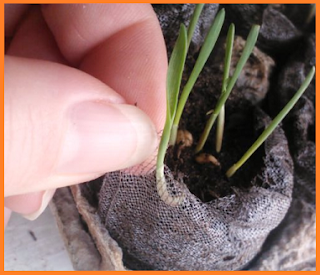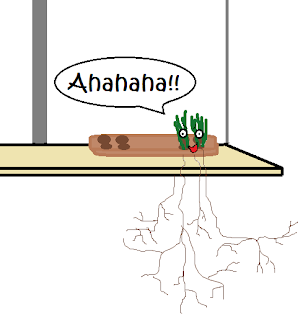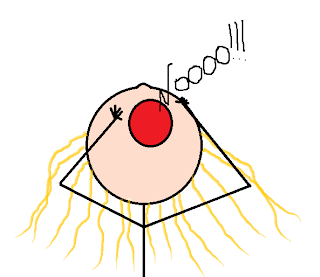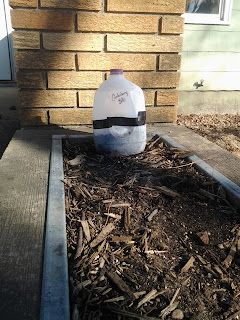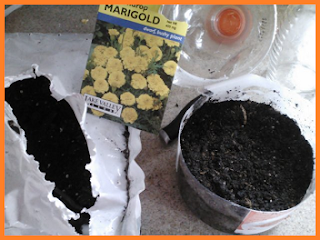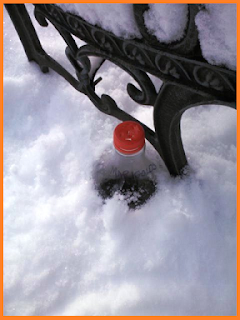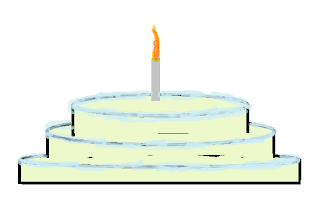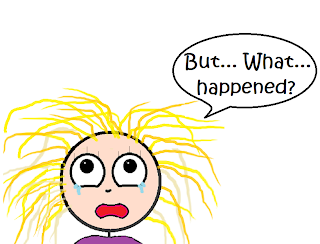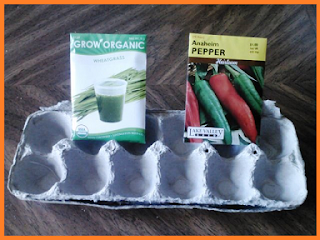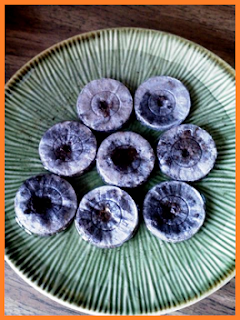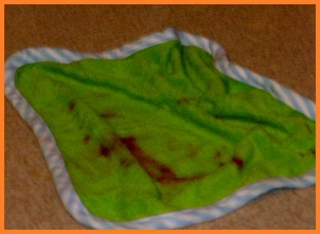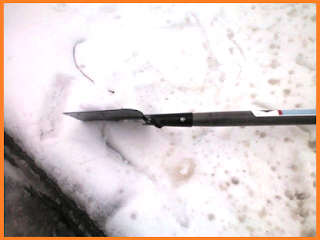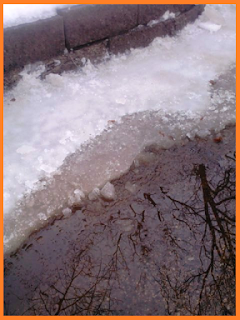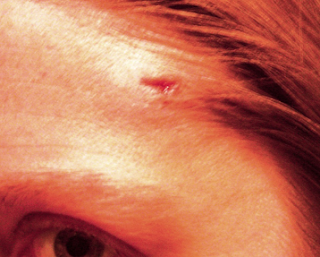Yippee!!!
Wheatgrass sprouts rather quickly, and is supposed to be quite easy to care for... you know... just like any other grass. You also don't have to worry about how far apart the seeds are planted. Again, just like any other grass.
Imagine if all gardening was this simple?
Indeed, I'm beginning to think that I should transplant it into the shallow clay pot that I bought already! Why, you ask? Well, I've discovered that wheatgrass blades are pretty tenacious. Just like the grass that grows in sidewalk cracks, wheatgrass sprouts will happily burst through netting that they shouldn't.
I'm kinda worried that once the roots grow large enough, they'll be poking through the egg carton they're being held within.
And then they'll shoot through the window sill,
Clear down through the basement, and into the foundation of the house. Then, the grass will continue to grow to such heights that the entire house will raise up into the clouds. Finally, a goose will fly inside and start laying golden eggs, which some kid named Jack will climb up and steal from us.
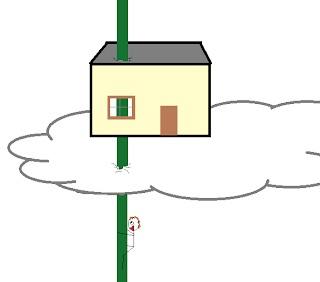 |
| Jack and the wheat stalk |
That greedy kid...
So, you see, I really need to move the wheatgrass into its permanent container, soon.
Why am I so interested in wheatgrass? Well, I took a wheatgrass shot a few years ago, and to be honest, I didn't need, or even want, the orange juice 'chaser'. I really liked it.
Yeah, I'm an odd one, I know.
Ok, so not only do I like the taste of wheatgrass, oddball that I am, but it's also a great and nutritious plant to have around. It provides vitamins A, C, and E, as well as contains nutrients like magnesium, chlorophyll, calcium, amino acids, and iron. This isn't just hearsay. I found that information on the Mayo Clinic's site.
On the flipside, there are a lot of claims about the benefits of wheatgrass that don't have any concrete research to back them up. This doesn't mean that the claims are false, of course... it just means that they can't be 100% verified. There just haven't been enough studies done... yet.
I have found small studies that place wheatgrass in a very favorable position, however.
- Take, for instance, A pediatric study that was done in India which shows that wheatgrass juice may reduce the amount of blood transfusions that are required to treat thalassemia major, the most severe form of anemia. A total of 11 out 16 patients had significant reductions in transfusions necessary.
I should point out, however, that aside from being a very small study, it was not carefully controlled. Regardless, the results make a large and more carefully controlled study worth doing!
- Another study, published in the Scandinavian Journal of Gastroenterology shows that wheatgrass juice is an effective treatment aid for ulcerative colitis. This study, unlike the one previously mentioned, was a highly controlled, double-blind study.
While also a rather small study, it was highly controlled, making it worth noticing.
These are only two, but there are more out there, to be sure. I've even heard that wheatgrass has been show to help with cancer, though I haven't actually seen a study saying as much. That doesn't mean it can't aid in cancer treatment, nor that the study isn't out there. It just means that I haven't seen one.
If you have, of course, let me know in a comment!
Based on what I've seen, growing wheatgrass is a great idea - an entire packet of seeds costs less than two shots of wheatgrass juice, and can last for quite a while - it's grass, right? It lives through everything!
Most people don't particularly like the taste of wheatgrass juice, making me a bit of a weirdo, since I really do like it. But, hey! That just makes things easier for me, right?
The only problem in my case is that I don't have the right kind of juicer. I guess I'll just have to hope enough nutrients get through my basic centrifugal juicer, since a masticating juicer is what you should really use in this case.
No worries, though. I have time.
Now, go plant some wheatgrass for yourself. It's easy to grow, and healthy, as well!

